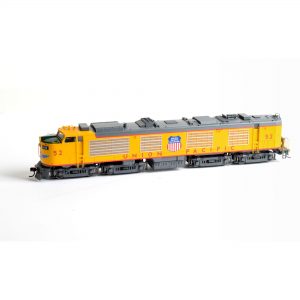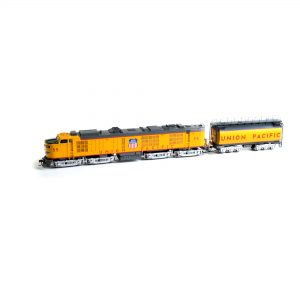Gas Turbine Locomotive
Prototype Information
General Electric and Alco built the first series of gas turbine-electric locomotives in the early 1950s, designed to give Union Pacific a powerful alternative to standard diesel power. Each unit carried a GE aviation-derived turbine rated at 4,500 horsepower, feeding electricity to traction motors much like a diesel-electric. The locomotives also included a small diesel engine to handle low-speed movements before the turbine engaged.
Union Pacific bought 25 of these locomotives between 1952 and 1954, numbering them 51 through 75. Railfans often called them “Veranda Turbines” because of the distinctive walkways that ran along their sides. The units burned cheap residual fuel oil, which made them economical in an era when heavy oil had few other uses. On the road, the 4,500-horsepower turbines proved capable of handling long, heavy freights over the demanding grades of the western system.
Despite their strength, the locomotives came with drawbacks. The turbines were loud, maintenance-intensive, and hard on their internal components. Fuel that had once been cheap also rose in cost. By the mid-1960s, the first-generation turbines gave way to Union Pacific’s larger 8,500-horsepower “Big Blows,” and the original fleet was retired by 1964.
Showing all 2 results
-

Athearn Genesis HO Gas Turbine Union Pacific w/ DCC & Sound
$292.00 Select options This product has multiple variants. The options may be chosen on the product page -

Athearn Genesis HO Gas Turbine w/ Tender Union Pacific w/ DCC & Sound
Price range: $392.00 through $408.00 Select options This product has multiple variants. The options may be chosen on the product page


